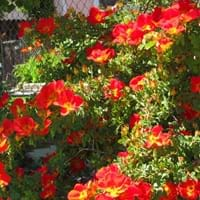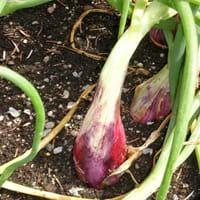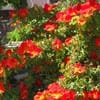Life Span
Perennial
Annual
Type
Flowering Plants, Ornamental Plants, Shrubs
Vegetable
Origin
Not Available
Asia
Types
Not Available
Not Available
Habitat
Foot Hills
Not Available
USDA Hardiness Zone
Not Available
4-8
AHS Heat Zone
Not Available
12-1
Sunset Zone
Not Available
A1, A2, A3, H1, H2, 1a, 1b, 2a, 2b, 3a, 3b, 4, 5, 6, 7, 8, 9, 10, 11, 12, 13, 14, 15, 16, 17, 18, 19, 20, 21, 22, 23, 24
Habit
Clump-Forming
Clump-Forming
Flower Color
Orange Red, Yellow
White
Flower Color Modifier
Bicolor
Bicolor
Fruit Color
Non Fruiting Plant
Not Available
Leaf Color in Spring
Green
Green, Light Green
Leaf Color in Summer
Green, Dark Green
Green, Light Green, Chartreuse
Leaf Color in Fall
Dark Green
Green, Yellow green
Leaf Color in Winter
Dark Green
Not Available
Leaf Shape
Pinnate
Acicular
Plant Season
Spring, Summer, Fall
Summer
Sunlight
Full Sun, Partial Sun
Full Sun, Partial Sun
Type of Soil
Loam, Sand
Loam, Sand
The pH of Soil
Acidic, Neutral
Neutral
Soil Drainage
Well drained
Well drained
Bloom Time
Spring, Late Spring, Early Summer, Summer, Late Summer, Early Fall, Fall
Summer
Repeat Bloomer
Not Available
No
Tolerances
Drought
Drought
Where to Plant?
Container, Ground, Pot
Ground
How to Plant?
Cuttings
Cuttings
Plant Maintenance
Medium
Medium
Watering Requirements
Average Water Needs
Average Water Needs
In Summer
Lots of watering
Lots of watering
In Spring
Moderate
Moderate
In Winter
Average Water
Average Water
Soil pH
Acidic, Neutral
Neutral
Soil Type
Loam, Sand
Loam, Sand
Soil Drainage Capacity
Well drained
Well drained
Sun Exposure
Full Sun, Partial Sun
Full Sun, Partial Sun
Pruning
Remove damaged leaves, Remove dead branches, Remove dead leaves
Remove damaged leaves, Remove dead branches, Remove dead leaves
Fertilizers
All-Purpose Liquid Fertilizer
All-Purpose Liquid Fertilizer
Pests and Diseases
Beetles, Black Spot, Caterpillars, Downy mildew, Mosaic viruses, Powdery mildew, Rust, Scale insects, Thripes
Red blotch
Plant Tolerance
Drought
Drought
Flower Petal Number
Double
Single
Edible Fruit
Not Available
No
Fragrant Bark/Stem
No
Yes
Foliage Texture
Medium
Medium
Foliage Sheen
Glossy
Matte
Invasive
Not Available
No
Self-Sowing
Not Available
No
Attracts
Birds, Butterflies
Aphids, Beetles
Allergy
Rash
Cold, Irritate the mucus membrane, Sinuses
Aesthetic Uses
Showy Purposes
Not Used For Aesthetic Purpose
Beauty Benefits
Not Available
Not Available
Environmental Uses
Air purification
Air purification
Medicinal Uses
Not Available
anti-inflammatory, Antiseptic, Antispasmodic, Hypotensive
Part of Plant Used
Flowers
Flowers, Leaves, Root
Other Uses
Oil is used in perfume, soaps, creams, etc.
Cosmetics, Used as a dye
Used As Indoor Plant
Yes
No
Used As Outdoor Plant
Yes
Yes
Garden Design
Container, Cutflower, Feature Plant, Foundation, Mixed Border, Topiary / Bonsai / Espalier
Edible, Herb / Vegetable
Botanical Name
Rosa foetida
ALLIUM cepa( Aggregatum Group)
Common Name
Austrian briar, Persian yellow rose, Austrian copper rose
Scallion, Shallot
In Hindi
Austrian copper rose
Shallot
In German
Die Gelbe Rose, Fuchs-Rose, Wachs-Rose, Persische Gold-Rose, Austrian Briar
Schalotte
In French
Le rosier fétide
échalote
In Spanish
Rosa foetida
chalote
In Greek
Austrian copper rose
είδος κρεμμυδιού
In Portuguese
Rosa fétida
Sallot
In Polish
Róża żółta
Sallot
In Latin
Austrian copper rose
Sallot
Phylum
Magnoliophyta
Tracheophyta
Class
Magnoliopsida
Magnoliopsida
Order
Rosales
Asparagales
Family
Rosaceae
Liliaceae
Clade
Not Available
Angiosperms, Monocots
Tribe
Not Available
Not Available
Subfamily
Not Available
Not Available
Number of Species
Not Available
Properties of Austrian Copper Rose and Shallot
Wondering what are the properties of Austrian Copper Rose and Shallot? We provide you with everything About Austrian Copper Rose and Shallot. Austrian Copper Rose has thorns and Shallot doesn't have thorns. Also Austrian Copper Rose does not have fragrant flowers. Austrian Copper Rose has allergic reactions like Rash and Shallot has allergic reactions like Rash. Compare all the properties and characteristics of these two plants. Find out which of these plant can be used as indoor plant. If you are interested to decorate your house and garden, find out aesthetic uses, compare them and select the plant which will beautify your surrounding. Along with beautification, try comparing medicinal and edible uses of Austrian Copper Rose and Shallot and you can choose the plant having best and most benefits.
Season and Care of Austrian Copper Rose and Shallot
Season and care of Austrian Copper Rose and Shallot is important to know. While considering everything about Austrian Copper Rose and Shallot Care, growing season is an essential factor. Austrian Copper Rose season is Spring, Summer and Fall and Shallot season is Spring, Summer and Fall. The type of soil for Austrian Copper Rose is Loam, Sand and for Shallot is Loam, Sand while the PH of soil for Austrian Copper Rose is Acidic, Neutral and for Shallot is Neutral.
Austrian Copper Rose and Shallot Physical Information
Austrian Copper Rose and Shallot physical information is very important for comparison. Austrian Copper Rose height is 150.00 cm and width 170.00 cm whereas Shallot height is 30.00 cm and width 10.20 cm. The color specification of Austrian Copper Rose and Shallot are as follows:
Austrian Copper Rose flower color: Orange Red and Yellow
Austrian Copper Rose leaf color: Green
Shallot flower color: White
- Shallot leaf color: Green, Light Green
Care of Austrian Copper Rose and Shallot
Care of Austrian Copper Rose and Shallot include pruning, fertilizers, watering etc. Austrian Copper Rose pruning is done Remove damaged leaves, Remove dead branches and Remove dead leaves and Shallot pruning is done Remove damaged leaves, Remove dead branches and Remove dead leaves. In summer Austrian Copper Rose needs Lots of watering and in winter, it needs Average Water. Whereas, in summer Shallot needs Lots of watering and in winter, it needs Average Water.





